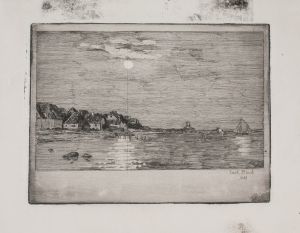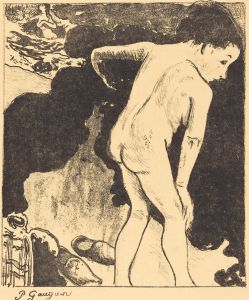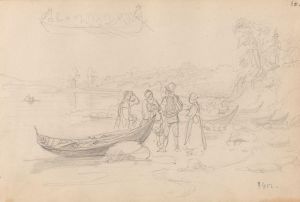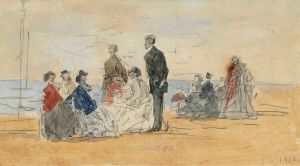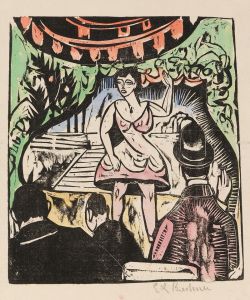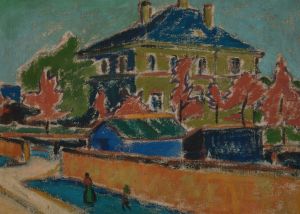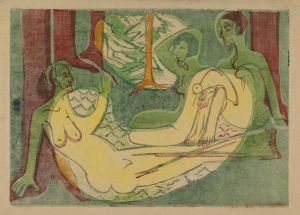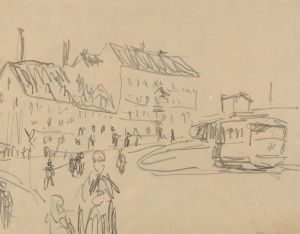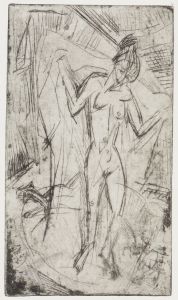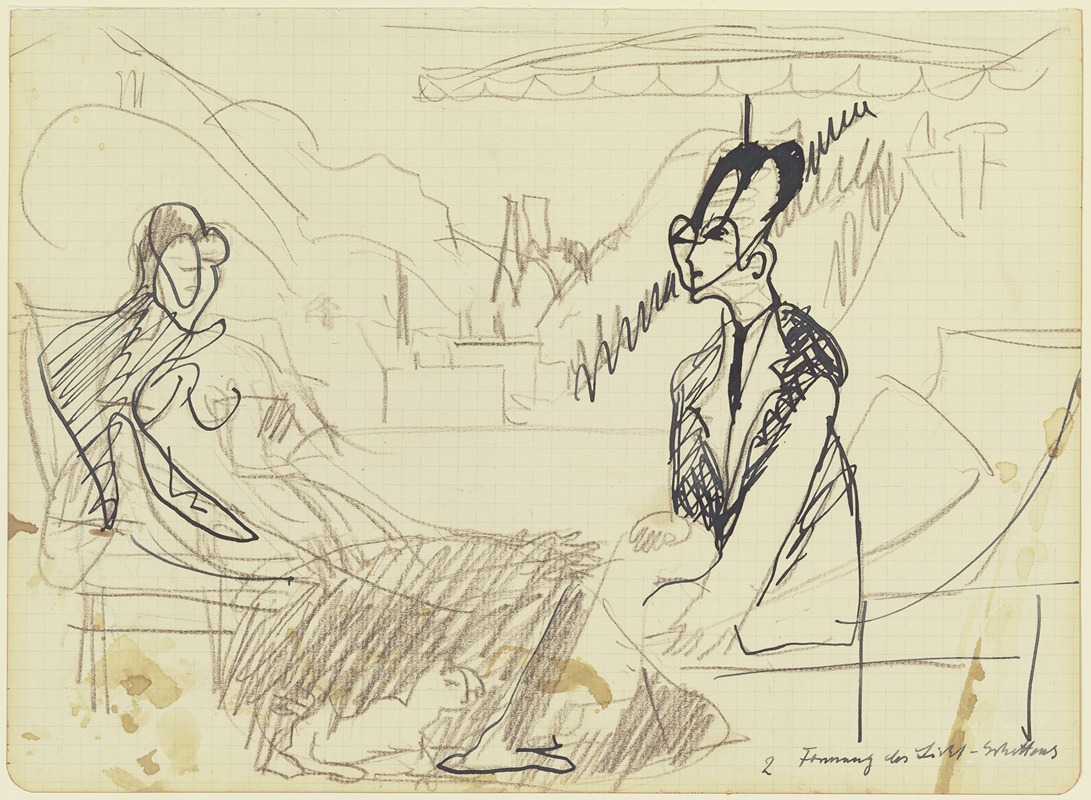
People on the deck chair
A hand-painted replica of Ernst Ludwig Kirchner’s masterpiece People on the deck chair, meticulously crafted by professional artists to capture the true essence of the original. Each piece is created with museum-quality canvas and rare mineral pigments, carefully painted by experienced artists with delicate brushstrokes and rich, layered colors to perfectly recreate the texture of the original artwork. Unlike machine-printed reproductions, this hand-painted version brings the painting to life, infused with the artist’s emotions and skill in every stroke. Whether for personal collection or home decoration, it instantly elevates the artistic atmosphere of any space.
Ernst Ludwig Kirchner was a prominent German expressionist painter and one of the founding members of the artist group Die Brücke (The Bridge), which played a pivotal role in the development of modern art in the early 20th century. Kirchner's work is characterized by its bold use of color, dynamic compositions, and a focus on the human figure, often exploring themes of modern life and the human condition.
"People on the Deck Chair" is one of Kirchner's paintings that exemplifies his distinctive style. While specific details about this particular painting are limited, it is consistent with Kirchner's broader body of work, which often depicted scenes of leisure, urban life, and the human form in various states of relaxation and interaction. Kirchner's paintings frequently feature elongated figures and a vibrant color palette, reflecting the influence of both traditional German art and the avant-garde movements of his time.
Kirchner's work was deeply influenced by the rapid changes in society during the early 20th century, including the rise of industrialization and urbanization. His paintings often capture the tension between the individual and the modern world, a theme that resonated with many artists of the expressionist movement. The use of exaggerated forms and vivid colors in his work was intended to evoke emotional responses from the viewer, a hallmark of expressionist art.
In "People on the Deck Chair," Kirchner likely explores themes of leisure and social interaction, common subjects in his oeuvre. The setting of a deck chair suggests a moment of relaxation, possibly in a park or a similar public space, where individuals could escape the hustle and bustle of city life. This aligns with Kirchner's interest in depicting scenes of everyday life, often with an underlying commentary on the social dynamics of the time.
Kirchner's art was not only a reflection of his personal experiences but also a response to the broader cultural and social changes occurring in Germany and Europe. His work was part of a larger movement that sought to break away from traditional artistic conventions and explore new ways of representing the world. The expressionists, including Kirchner, were interested in capturing the emotional and psychological aspects of human experience, often using distortion and abstraction to convey deeper truths.
Throughout his career, Kirchner faced numerous challenges, including the impact of World War I and the subsequent political and social upheavals in Germany. Despite these difficulties, he continued to produce art that was both innovative and deeply personal. His legacy as a pioneering figure in expressionism is well-established, and his works continue to be celebrated for their boldness and emotional intensity.
While specific information about "People on the Deck Chair" is limited, it remains an example of Kirchner's ability to capture the essence of human experience through his unique artistic vision. His contributions to the expressionist movement have left a lasting impact on the art world, influencing generations of artists who followed in his footsteps.






